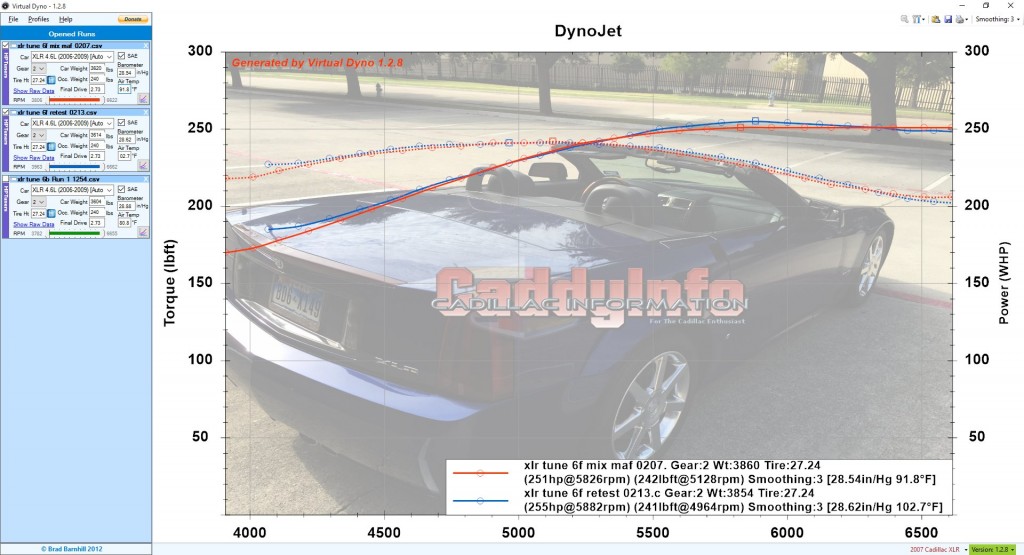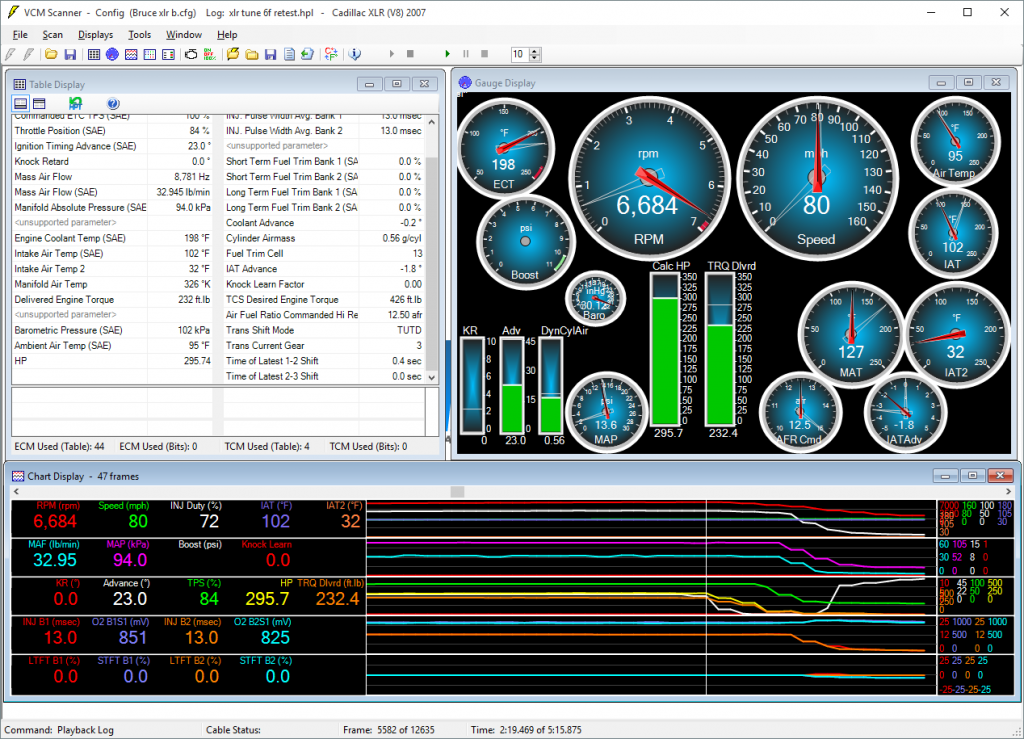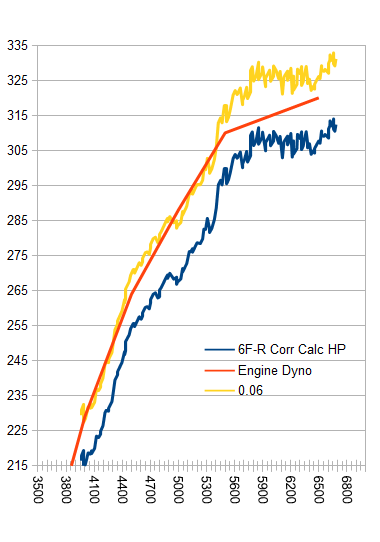Tune 8A commands 12.8:1 AFR from 1500-6700, where Tune 7A was at 12.5:1 AFR. The VVT in 8A has some minor cleanup in an unused area. The piston protection in 8A is at 8192; in 7A 6400 rpm. 7A was the ‘just advance the timing’ run, so 8A has 2 degrees less timing from 2300-5600 more or less, with -3 at 4200-4400.

I ran 5 runs today to study run to run variance. I have started not initiating the scan until ready to test, which avoided (randomly?) the scanner hang issue. The reference number for each test is the Tune (8A), the time the run starts in its scan (0942) and the test area used for the run (A, B, C). Test area A data was uniformly hard to smooth for Virtual Dyno, so I will plan to exclude it and focus on B or C.
The runs on the graph above are all the same tune 8A.
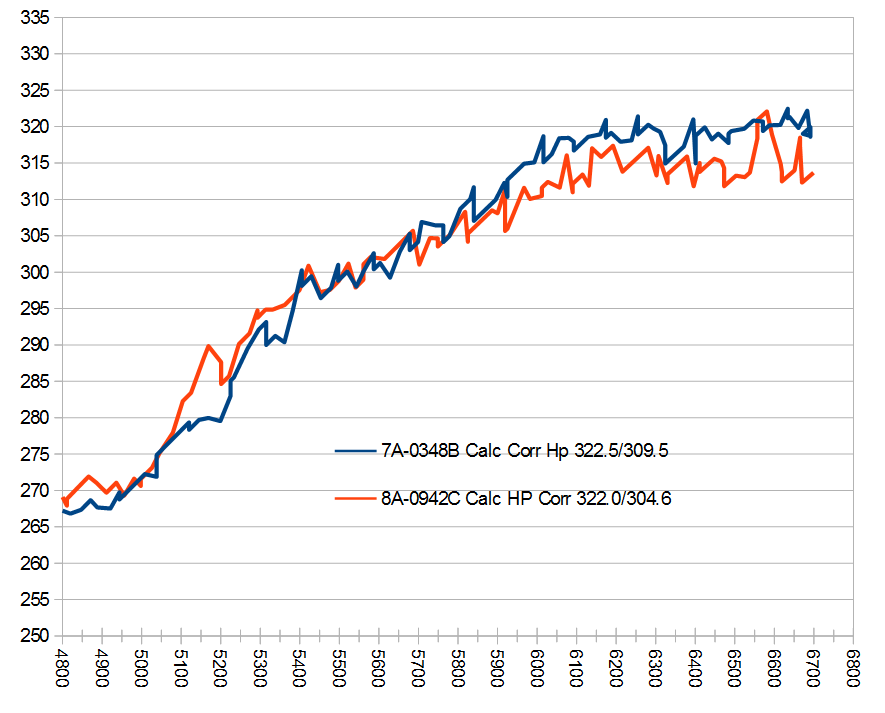
This comparison of 7A, which was non-viable due to heavy KR, vs 8A-0942C. Even with the main spark retard in 8A there is still some KR in that run, perhaps caused by IAT advance?
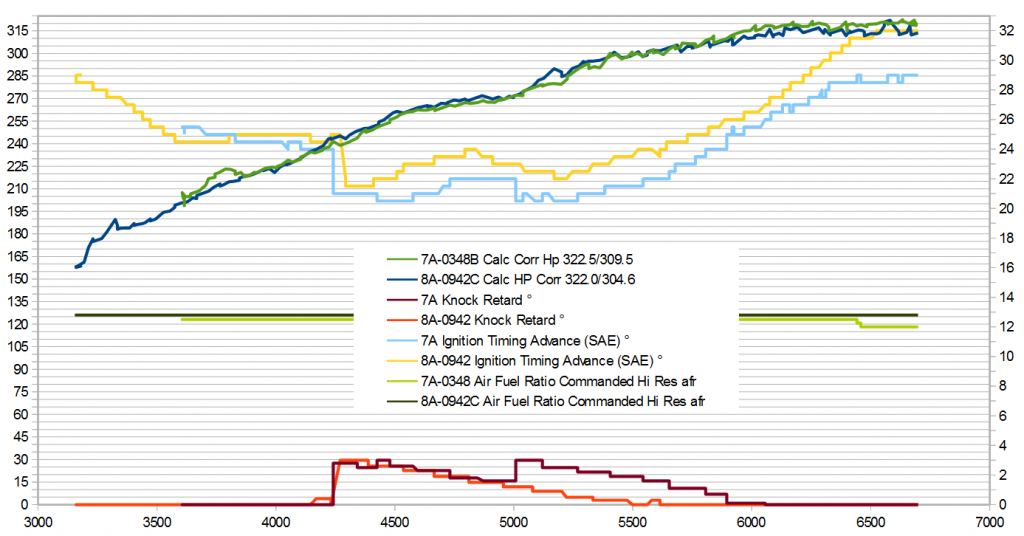
8A is able to run more timing than 7A partially due to conditions, and due to avoiding some KR at 5000 RPM. The max timing on 8A actually runs above MBT so I will reduce timing from 6500 RPM. One knock event causes 3 degrees of KR and the characteristic stair-step decay from 4250-5500 rpm. My goal is to tune out any knock.
These show the raw calculated data, with no smoothing. All 5 runs HP data, 1 run torque data for reference. The hp/torque maximums are shown for each run, which is less valuable unsmoothed but provides a reference.

This is the Virtual Dyno wheel hp / torque for the 8A-0942C.
Here is a comparison across viable runs with a Tune 7A run included
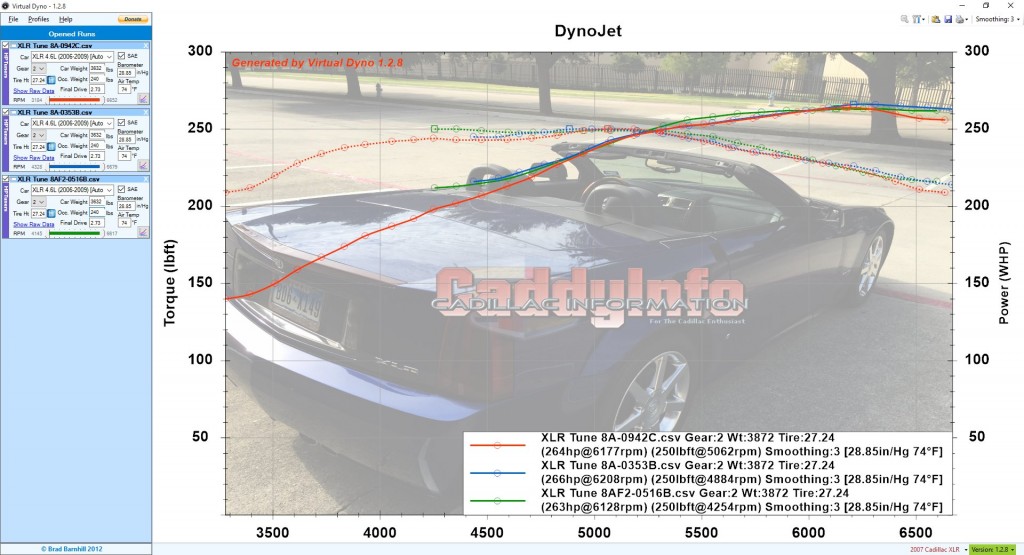
Given 7A and 8A are on different days they appear to be equivalent and I don’t see a tune delta in the Virtual Dyno plot.












